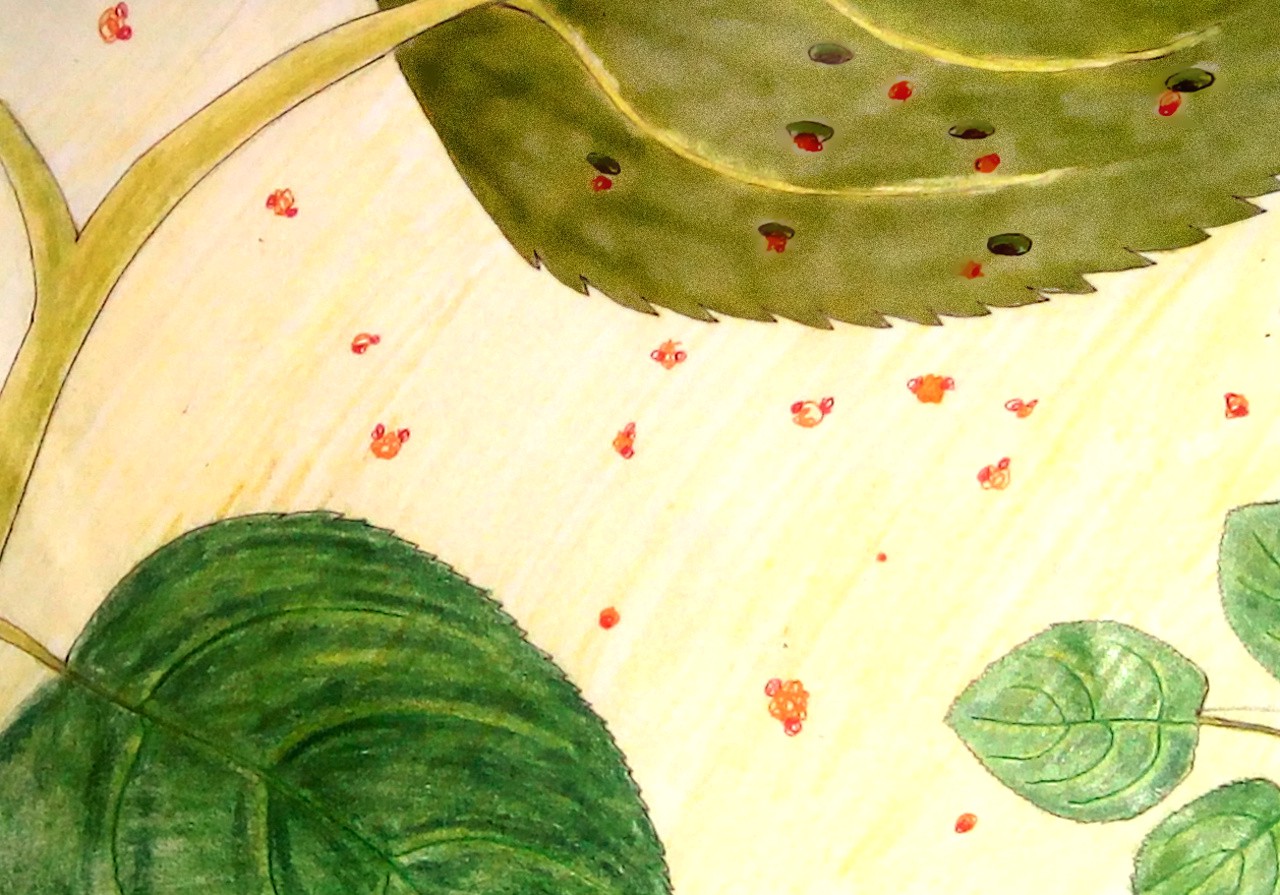Carbon is not alive. But without carbon, there would be no life at all.
This story can also be read on Medium.
A few weeks ago, we featured the life story of a carbon atom. Somewhere there, Carbon noted that you can’t really call an atom “alive”. But, be that as it may, life and carbon do have a connection.
The atom of carbon has 6 protons. It is common on Earth, and is an essential component of several materials such as graphite and diamond. But, more importantly, carbon is the main component of all living things.
Plants are eating carbon everyday. They open their thousands of tiny mouths and swallow it.
Tiny mouths? Yes — plants have many microscopic holes on their leaves, which they can open or close depending on the light and drought in their area. These holes are called “stomata” (but who cares about this evil scientific name?). Of course, these holes are much smaller than what is shown in the picture.
When plants swallow carbon, it comes in the form of “carbon dioxide”. The carbon is joined together with two atoms of oxygen, and the three together form one single molecule of gas. Many of them together go to form part of the air we breathe — which is, of course, the air that plants breathe too.
When plants swallow carbon in the form of carbon-dioxide, it enters what scientist call the “Calvin cycle”, which is too complicated to go into at the moment. What happens in the end is that the carbon is taken away, and joined with other, different, atoms to make sugar.
The oxygen — which just broke up with the carbon — goes sadly away to breathe and find a new partner.
Plants love sugar. (I do, too!). In plants, sugar is stocked in places like roots, where it’s embedded into “starch”, or in the fruits, where it’s stored as “fructose”. Fructose is a small sugar. Glucose is another one. Starch, on the other hand, is a giant, long sugar. Cut starch in small pieces and you will get glucose.
A plant has different organs: leaf, root, stem, flower, fruit. Along its life, a plant has different needs for each organ.
In spring, for example, the plant needs to send sugar to the shoot — the part of the plant that’s above ground — to grow a flower and then a fruit. In the winter, on the other hand, plants send sugar down to the root to store it. The way plants allocate sugar — that is, decide how much the shoots or roots get — is well studied by scientists.
Many factors change the way organs compete to get their share of the sugar. It can depend on many things, including the how much light they have, the level of water they can access, and the amount and quality of nutrients in the soil. If the limiting factor is belowground, the plant sends more sugar to the root. If it is aboveground it’s the shoot that gets the sugar.
But if you want to grow healthy plants, you don’t always have to get into fancy soil manipulation. It might be enough to simply change the size of your pot.
A study published in Functional Plant Biology showed that doubling the size of the pot increases the plant growth by 43%, just because it has more nutrients available to draw upon. Moreover, a small pot decreases the photosynthetic rate: it can’t convert sunlight into energy as fast. So if you want a vigorous plant, buy it a big pot (unless you want a bonsai, of course).
The atom of carbon is now in a chain of six other carbons, in a molecule called fructose. The fructose is a sugar mainly found in …. fruits!
Babe the pig who was wandering around, comes close to an old tree and eats its fruit. Hmm — nice apples. Babe the pig uses carbon from the apple to build his own body. He uses it to grow, and to maintain his body-temperature. On average, 10% of the carbon a primary consumer like him eats is used for the animal growth or reproduction. All the other atoms of carbon are lost while breathing, getting together with oxygen to form carbon-dioxide again.
I was wandering around the meadow, and, when I saw Babe the cute pig, I thought of all the ham I could eat. Hmm — nice ham. I took my butcher knife, killed Babe the pig and cut a large slice of ham. Hmm — nice fat.
Meat is full of fat, and fat is full of carbon. In fact, a fatty acid — the “fat molecule” — is made of a chain of carbon. The fatty acid’s name depends on the number of carbons in the chain. The secondary consumers — like me — use only 10% of the carbon from the primary consumer — Babe — to grow (big, as well as fat!) and make babies. All the rest is breathed away.
That means secondary consumers only uses 1% of the carbon from the producer — the apple — to grow and make babies. All the rest gets lost along the way. That, by the way, explains why it’s more efficient to be vegetarian.
When I die, my body will be decomposed by cute bacteria and decomposers, which will feast on my fat corpse. I will joyfully participate in the organic fertilization of the meadow, where my good friend the apple tree will grab soil nutrients with its roots.
It feels so nice to be part of such a cycle.
Have something to say? At Snipette, we encourage questions, comments, corrections and clarifications — even if they are something that can be easily Googled! Or you can simply click on the ‘👏 clap’ button, to tell us how much you liked reading this.
